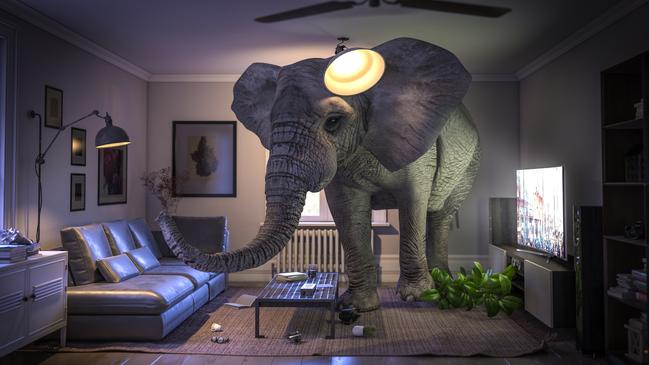Interest rate rises: why Aussie mortgages go against the herd
The US is the elephant in the room impacting many of the world’s money trends, but Australian mortgages can ignore the herd.
Property
Don't miss out on the headlines from Property. Followed categories will be added to My News.
There’s a popular saying in financial circles that when the US sneezes, the world – including Australia – catches a cold.
We’ve followed the Americans into stock market slumps, we’ve followed them into economic downturns, and we’ve followed them into wars.
Think of the US as a giant red, white and blue elephant tramping across the global financial landscape, trumpeting warnings to the rest of the world when its finances aren’t too flash and stomping on the fortunes of many.
But when it comes to interest rates, the elephant train breaks up a bit and junior jumbo Australia likes to go its own way.

Australia’s Reserve Bank last lifted its official cash rate on June 7, to 4.1 per cent, and the talk now is that we may have seen the final RBA rise as inflation and spending slow dramatically.
However, the US increased its official interest rate by 0.5 percentage points to 5.5 per cent on July 26, and it may go higher still.
Central bank interest rates in other key nations are following a similar path. The European Central Bank went from 4 to 4.25 per cent on August 2 and Britain rose to 5.35 per cent on August 3. Also on August 3, Egypt’s official interest rate rose to 19.25 per cent – ouch.
In the rates race higher, we have fallen off the pace, but that’s great for Australian borrowers.
Central banks everywhere use interest rates as a brake or accelerator to try to control inflation and their economies.
By raising rates, they tap the brakes and hopefully stop people spending more money, businesses lifting prices, and inflation rising.
Sometimes they slam on the brakes, as the RBA did between May 2022 and June 2023 with almost monthly rate rises.
Aussie borrowers with variable-rate loans have already seen their repayments rise more than 50 per cent since mid-2022, and those on fixed rates are only now feeling the pain of the mortgage cliff as their low rates leap higher.

There is talk that interest rates in major economies are at their peak or heading lower, and there is no reason for Australians to expect our cash rate rises to anything like the US.
Their mortgage market is very different to ours, because the vast majority of loans there are on very long-term fixed rates, so US rate rises generally only affect new borrowers.
In contrast, a majority of Aussie home loans are variable, and only about 5 per cent of new lending here is fixed.
Our house prices are much larger and our home loans much bigger than many other countries, so rate rises in Australia have a greater impact on peoples’ ability to spend money elsewhere and stoke inflation.
Interest rates among major economies don’t usually get too out of whack, because there also are currency, banking and trade issues that can complicate things.
However, Australian borrowers should be happy that we have lost the rates race, and welcome the relief in home loan repayments we are now experiencing.
Originally published as Interest rate rises: why Aussie mortgages go against the herd





